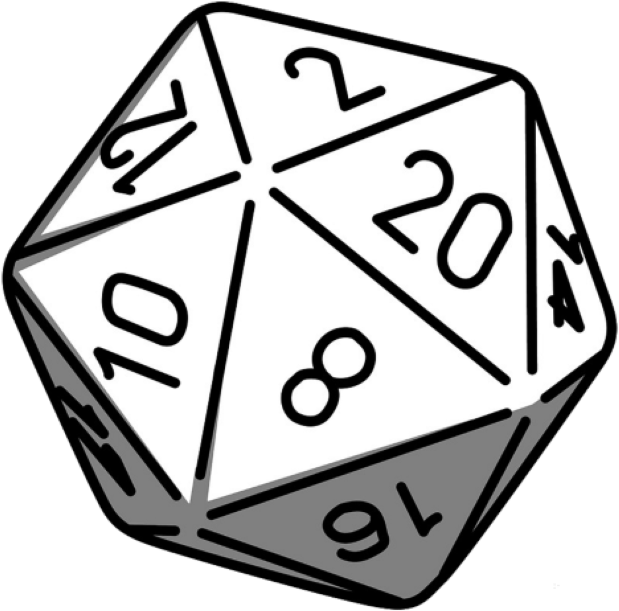This is purely hypothetical, just for fun. In this scenario, you don’t get to know who the GM is in advance, but they do have to run it as written. The players can leave whenever they like, but the GM has to stay until either all players leave or the players beat the dungeon.
Every room is a menagerie of different homebrew monsters and the stat blocks are page inserts throughout the module book. There is no order. The index doesn’t have a list of monsters. Get ready to hear “Okay, one second…” every minute or so with wildly flipping pages from the GM.
So simple, so elegant. And you could probably name the stat blocks something confusing to make the GM start reading the wrong one.
Upon stepping into the room, the players are ambushed (see the core rules for ambushes) by a drow mage (see the Monstrous Manual for more on the drow) riding a Grizwoz (see Appendix B: New monsters). The drow is level 7 (the GM should prepare a spell-list before the adventure starts).
I start by making a map. I am terrible at making maps. I try to improve my map by using a transparent quilting ruler, defining a scale, and carefully noting the measurements of all the rooms. I somehow manage to change my scale several times during this process, write down the wrong measurements, and get confused about which lines are which on my quilting ruler. Complicating matters, my quilting ruler is big and heavy, and slips around on the page. (Naturally, I don’t notice).
Since my dungeon has multiple levels, I am very careful to include staircases, which, since none of the floors are the same size and shape, don’t actually join up from level to level. I notice that everything looks a little sloppy, so I go over it in pen, and erase the pencil lines. This makes it look nicer. It also destroys any last traces of geometric plausibility.
When I’m finished, my Escher-esque monstrosity is so impossible to navigate that it doesn’t even need monsters. The entire party will just get sucked into the treacherous anti-grid of the map itself, and never be seen again. If the GM asks me to explain the map so they can extract the players, I will be unable to do so, since I have a terrible memory, and can’t read my own handwriting.
This is magnificently evil. It’s also extremely specific, to the point I’m worried this happened in your life.
-
Put the map and its key on different sides of the page
-
Up isn’t North
-
Bury important information in long paragraphs of descriptive text that are likely to be skimmed at the table. Bonus points if that information is CRUCIAL to set up, pay off, or even resolve a future encounter.
-
No bullet points!
-
Sometimes italicized text is meant to be read to the players, sometimes it isn’t. Do not make this clear, so the DM is sure to almost give away an important detail before awkwardly stopping mid-sentence.
-
Include interesting set pieces, with no rules for how players should interact with them. Is there naval combat? Be sure to provide NO rules, or even guidance, for things like navigating, cannons, boarding, etc.
-
Or, refer to rules in other books, especially non-core ones so the GM might not have them.
-
Include custom monsters but omit some stat blocks
-
Put it all into a PDF with NO bookmarks. Or extremely bad bookmarks. And lock down the PDF to put another hurdle in case the GM wants to fix the bookmarks. (Huge bugbear of mine, honestly, why do so many publishers completely give up on something so easy but so important to the usability of their product?)
-
On the map of the level, pick a room near the center of the dungeon (as long as it’s not where players enter) and label it as “1”, circle this rooms in a random order, labeling them 2, 3, 4, etc., making sure rooms that have connections don’t have consecutive numers… keep circling outwards until all rooms have numbers. Then put the rooms in numerical order in the GM module book. Only refer to the room number on the map and the heading of the room. Don’t use the room number to reference exits from the current room either, just state things like “a cave exit is to the east and a wooden door is in the north wall”.
The DM will constantly have to refer back and forth from the map to the book - and have to flip to random parts of the book since the numbers aren’t “in order”.
For additional hate, make sure that north doesn’t point toward the top of the map, and/or don’t place a compass rose on the map.
For even more additional hate, make the players hunt down opponents/creatures in the dungeon that also move through the dungeon as the players move rooms.
Make sure that any “when any player first enters this room, [x] triggers” is at the veeeeeery last part of the room description, after the DM has already read the description to the players and the players have already started planning what they want to do in said room.
The BBEG is located at the center of the dungeon. Each sealed room of the dungeon is guarded by a magic djinn which will only open the next room if certain fetch quest items are collected. All of the required items are located in the dungeon, but require the PCs to traverse trapped rooms to get them (you now how PCs just love dealing with traps).
There are 100 sealed rooms to get to the center of the dungeon. Players can take a long rest after each room.
@Susaga Every room references another room, by number. No page numbers or other references.
No statblocks. Just look up the statblocks in the Monster Manual, this splatbook for Druids, and an online PDF, available for free after signing up.





